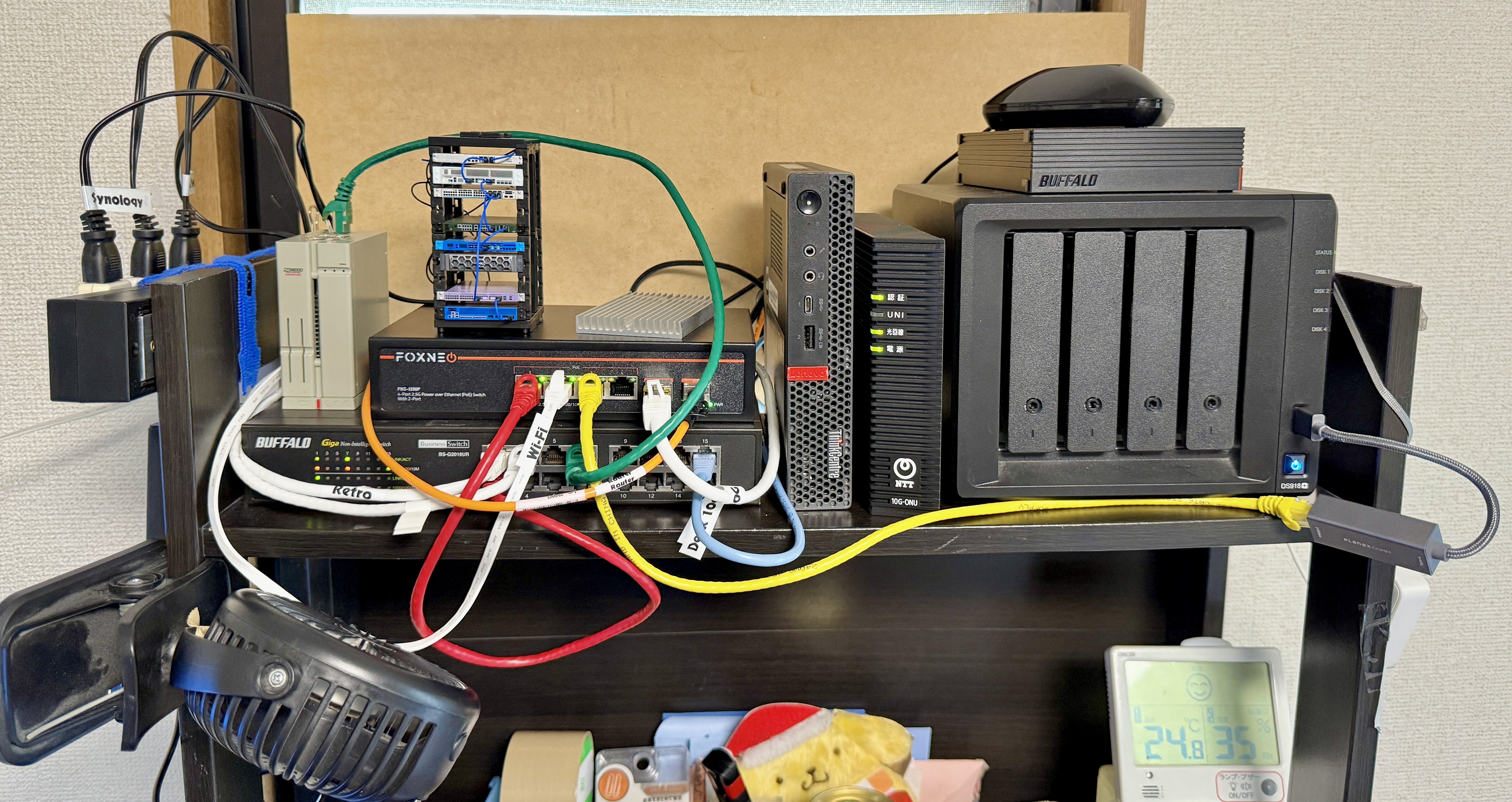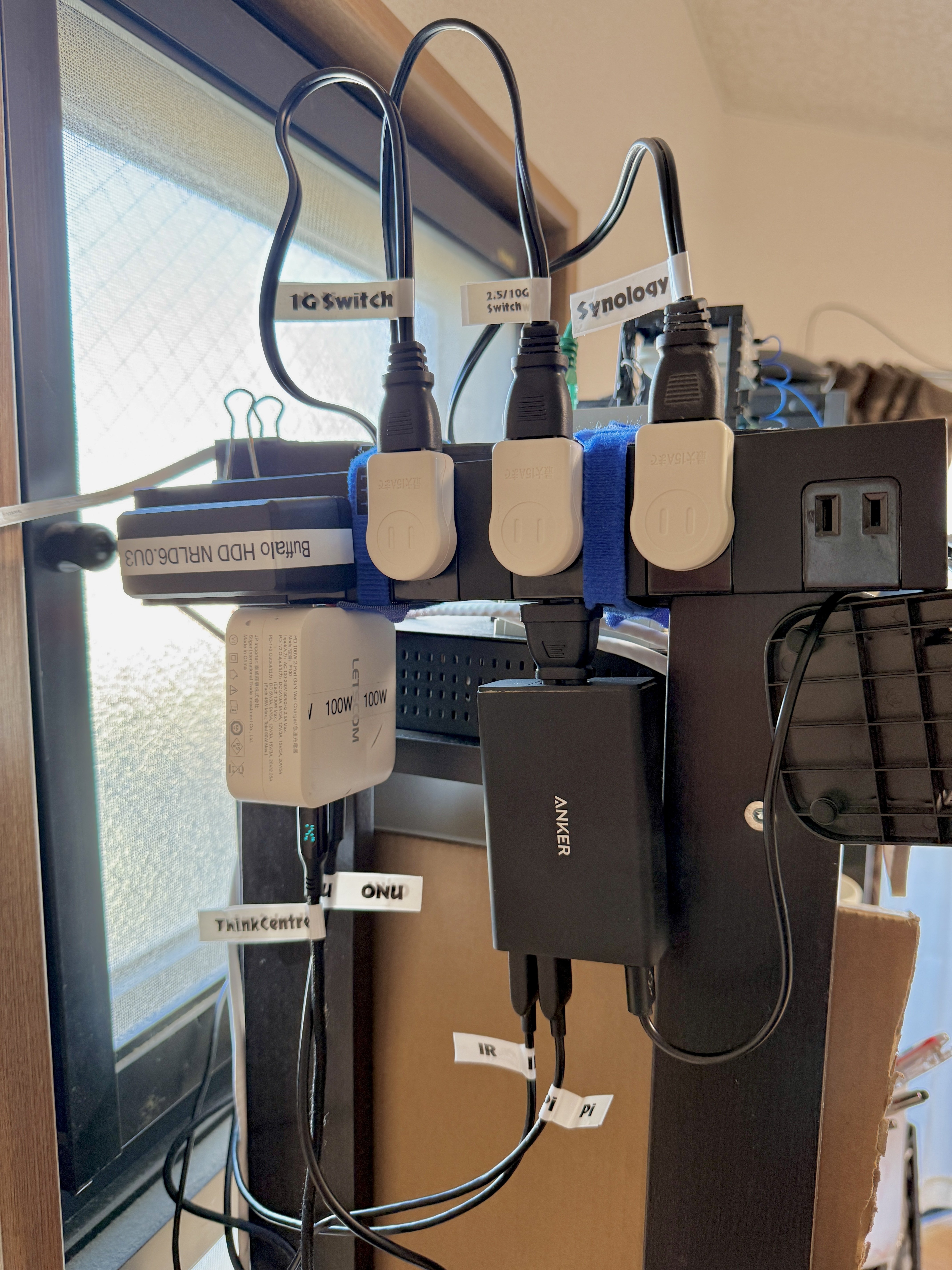This is why I’m still using a Synology ¯\(ツ)/¯
I can install all the fun stuff I want in Docker, but for the core OS services, it’s outsourced to Synology to maintain for me
This is why I’m still using a Synology ¯\(ツ)/¯
I can install all the fun stuff I want in Docker, but for the core OS services, it’s outsourced to Synology to maintain for me
APFS still supports resource forks just fine - I can unstuff a 1990’s Mac application in Sequoia on a Apple Silicon Mac, copy it to my Synology NAS over SMB, and then access that NAS from a MacOS 9 Mac using AFP and it launches just fine.
The Finder just doesn’t use most of it so that it gets preserved in file copies and zip files and such.


All my stuff is running on a 6-year-old Synology D918+ that has a Celeron J3455 (4-core 1.5 GHz) but upgraded to 16 GB RAM.
Funny enough my router is far more powerful, it’s a Core i3-8100T, but I was picking out of the ThinkCentre Tiny options and was paranoid about the performance needed on a 10 Gbit internet connection


Same here in a Synology DS918+. It seems like the official Intel support numbers can be a bit pessimistic (maybe the higher density sticks/chips just didn’t exist back when the chip was certified?)


Most 720p TVs (“HD Ready”) used to be that resolution since they re-used production lines from 1024x768 displays


It would be to replace my 4-bay Synology DS918 NAS with something with more drive bays and 10 Gbit connectivity


On the flip side, we’ve seen with inflation that just amazing amounts of debt have been created, with consumers massively underwater spending way beyond their means, leading to things like house values blowing up completely unsustainably.
So inflation is not automatically better, it’s just a different kind of bad.


Cars and TVs are already deflationary - the same money will buy a better car or TV if you wait a year or two (or just wait a year and buy used)
I recently got upgraded to 10 Gbit fiber at home so I’ve been through researching this stuff.
With a 3G WAN, I’d go with a 2.5 Gbit LAN - 2.5G equipment is quite affordable now. The next step is 5G but that equipment is rare, and 10G starts getting expensive.
Do you know what router they’re giving you? What LAN ports does it have? Does it even have a 2.5 or 10G LAN port or only 1G ports?
USB 2.5G adapters are available new for cheap and I’ve had good luck with them, even using one on a Synology NAS with an open source driver.
The wiring is probably fine as long as you don’t have any very long runs. I’d keep it and only replace it if the links randomly drop down in speed to 1G.
2.5G switches also aren’t too expensive. You can get one with only a few ports for the devices that can make use a lot of bandwidth (PC/NAS/Server) and plug your current switch into it for all the 1G devices like TVs, game consoles etc. The PiHole definitely doesn’t need a fast connection.


If everyone lives a comfortable, safe and fulfilling life without risk of poverty or losing everything they have, then they are more likely to have children and raise them to become productive people who will contribute to society.
You would assume that, but is it really true? The countries with the safest and most comfortable lives, in Scandinavia, have the lowest birth rates. The countries with the least safe and comfortable lives, in Africa, have the highest birth rates.


Housing is pretty affordable in Japan since housing in Japan is not an investment, it depreciates like a car (only the land has value, the house ontop of it has literally negative value since it’s assumed anyone will want to bulldoze it), and their lax zoning allows for continual densification to happen.
There isn’t a standard that is broadly-adopted, but NUT (https://networkupstools.org/) has reverse-engineered drivers for nearly every UPS out there, usually each brand has their standard so as long as the brand is supported it will work. (NUT is also what TrueNAS, Synology, QNAP, etc use internally for their UPS support)
I’ve had good luck with using NUT with APC UPSes (both consumer models and buying used enterprise rack-mount models).
One cool thing you can do with NUT is share the UPS state over the network, so that multiple machines can respond to the power state instead of just the machine that is plugged in via USB directly.
When I was following Synology communities closer, the common wisdom was that the expansion units weren’t great in either performance, stability or cost, and you were better off buying a new, bigger unit and then selling your old one used to recoup the cost difference.
I’m also in the same position, I have a DS918+ that is full. It’s also 6 years old and probably on the tail end of getting software updates so I’m weighing my choices…


It’s 6 years old now so I can’t really complain but even new ones don’t come with 2.5Gbe by standard, it seems that should be cheap enough to throw in there by now. At least a lot of the new ones can be upgraded internally to 10 Gbe.


It’s from a japanese Gacha machine! https://bitbang.social/@kalleboo/112755170852099746


Precisely, the rear ethernet is 1 Gbit, the USB adapter is 2.5 Gbit!


I just got 10 Gbit internet last week so I had a chance to tidy everything up. The ThinkCentre is the 10 Gbit router, the Synology actually hosts everything.

Also finally labeled all the mystery cables. Also replaced the proprietary 20V/12V bricks for the ThinkCentre and 10G Fiber ONU with USB-C adapter cables to keep things tidier.



Solar and wind are just too cheap to build, they are going to take over no matter what anyone does. And in areas with fossil fuels still in heavy usage, short-term putting all the money into building solar makes complete sense - every new solar panel means that much less fossil fuel burned. We still have lots and lots of low-hanging fruit.
With renewables will come battery storage to handle the unpredictability, on the short term, battery projects are going to be super profitable so there will be lots of them. But those profitable battery projects will only handle the easy problems - grid stabilization and a typical overnight cycle. It will leave the grid vulnerable to that freak 2-week long cold snap every 6 years (that may be more common as the climate goes insane and unpredictable)
I’m a big fan of nuclear, but at the current cost difference to solar and wind, it doesn’t have a chance. The role I see for nuclear is to reduce the amount of battery storage needed. If the cost to build nuclear with newer, smaller, more cookie-cutter reactors can come down to replace the cost of batteries long term (as they have to be cycled out after a decade or two) then it will slot in really nicely.


Here are some results if anyone comes across this thread in the future.
The baseline result I need to achieve is a speedtest result of 7.5 Gbit that the ISP’s rental router gives me.
I ended up picking up:
Initially I installed pfSense. I ran iperf3 to just get an initial sanity check that the PCIe card/wiring was working right but was getting results between 3-7 Gbit with the CPU pegging at 50%. Some quick googling returned results like “you can’t run iperf on pfSense!” and “pfSense isn’t a router, why do people keep using it as a router, it’s a firewall!”, so I decided to switch to OpenWRT since the Linux side of things always seems to make more sense.
On OpenWRT, iperf easily hit 9 Gbit with like the CPU at 95% idle.
It took like 2 hours to configure the weird IPIP6 tunnel my ISP uses for IPv4, but once it was set up, the machine has no trouble routing the same 7.5 Gbit speedtest the ISP router managed, with the CPU usage at 78% idle (the remainder in “sirq”)
Power consumption:
This new driver is written in Rust, so it changes nothing about the debate